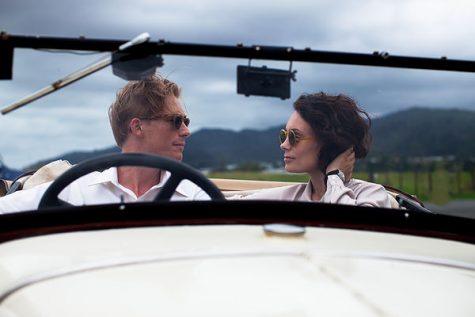Jean Review
 Jean, starring Kate Elliott, convincingly follows the ups and downs of the controversial flight career of Jean Batten, a New Zealand born woman made famous for her long distance solo flights during the 1930’s. The film opens with a picturesque Australian sunset behind remarkable air to air footage of Jean flying, something the producers capitalize on very well. This, along with a simple, atmospheric score provides a distinctly tranquil mood throughout most of the movie.
Jean, starring Kate Elliott, convincingly follows the ups and downs of the controversial flight career of Jean Batten, a New Zealand born woman made famous for her long distance solo flights during the 1930’s. The film opens with a picturesque Australian sunset behind remarkable air to air footage of Jean flying, something the producers capitalize on very well. This, along with a simple, atmospheric score provides a distinctly tranquil mood throughout most of the movie.
The mood temporarily transitions to be upbeat, while Jean is shown landing after her 12,000 mile journey from England to Australia into a field of people cheering. Jean makes several of these trips, attempting to break various records while contending with sponsors who don’t believe in her, harassment from the press, and her love life. She constantly struggles to manage her own life while living up to the ambitions of her mother, who follows her throughout her journey.
The sets, costumes, and scenery serve excellently to create a very appropriate atmosphere for the mood and the time period. The number of period-correct cars and other props which must have been enlisted by the producers is one of many impressive features given the inconspicuous nature of the film.
The ability to instill the feelings of the characters into the viewer through its cinematography is perhaps the strongest virtue of Jean. This is accomplished by the fairly consistent formula of alternating between beautiful aerial shots and various character focused scenes on the ground, each of which reveals a different aspect of Jean or another character. For example, this method gives the viewer a shockingly uneasy sense of vertigo as Jean imagines herself crashing into the ocean as many similar pilots have.
Where this formula falls short is in its dilution of the most intense- near death moments Jean has. The movie misses huge potential for the seemingly unending, certain doom moments that it could have had, where Jean saves herself at the last moment by some miracle. Instead, viewers feel short-handed by how suddenly the mood changes from peaceful, to frantic, then tranquil again. What may be an attempt for Jean to appear calm and collected in these intense moments results in a lack of empathy for her. Elliott’s ability to convince the viewer that she is flying through a sandstorm, instead of sitting in front of a green screen, seems to be her biggest hindrance.
The collection of short clips also struggles to give the viewer the appropriate sense of chronology and to do justice to the real story of Jean Batten. While emotionally it seems unlikely Batten herself felt so strongly about her struggle, the film would benefit from including more plot-specific elements so it is clear to the viewer why Jean goes through the emotions she does.
Jean may be worth watching for the cinematography alone. The experience of flying across the world with Jean is unique to the movie and genuinely satisfying. Some of the more legitimate concerns of the real Jean Batten are downplayed, sure, but her struggle, for the most part, remains relatable to the viewer despite taking place in an entirely alternate time and location. Overall, if you’re looking for a detailed account of the life of Jean Batten, this is not the movie for you, but for an enjoyable adventure flying across the world in the 1930’s, look no further.

